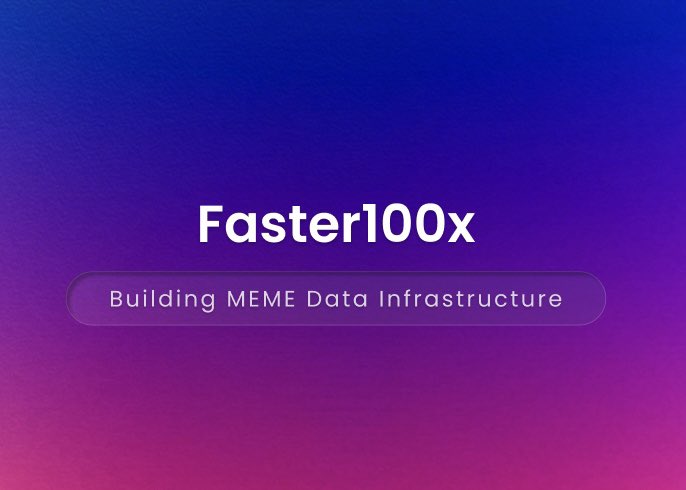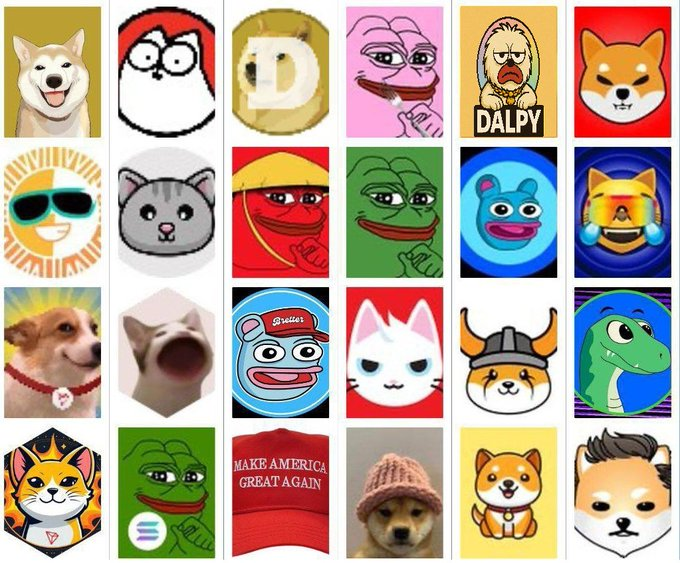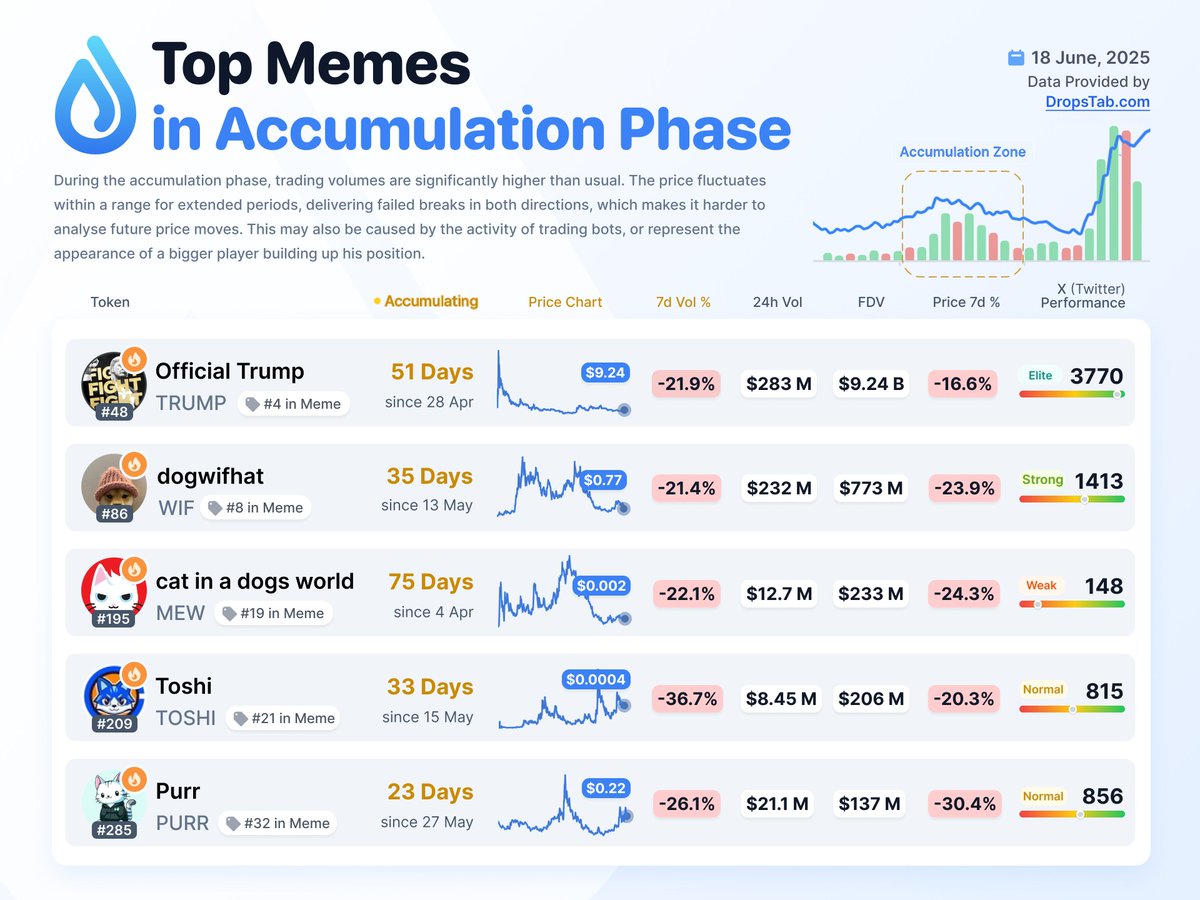
MEW
cat in a dogs world价格
$0.0022730
-$0.00019
(-7.57%)
过去 24 小时的价格变化

MEW 发行人风险
请采取一切预防措施,并注意此加密资产被归类为高风险加密资产。此加密资产缺乏明确可识别的发行人或/和成熟的项目方,这会增加或可能增加其面临重大市场风险的可能性,包括但不限于极端波动性、低流动性或/和市场滥用或价格操纵的可能性。无法绝对保证此加密资产的价值、稳定性或以优惠或理想价格出售的能力。
免责声明
本页面的社交内容 (包括由 LunarCrush 提供支持的推文和社交统计数据) 均来自第三方,并按“原样”提供,仅供参考。本文内容不代表对任何数字货币或投资的认可或推荐,也未获得欧易授权或撰写,也不代表我们的观点。我们不保证所显示的用户生成内容的准确性或可靠性。本文不应被解释为财务或投资建议。在做出投资决策之前,评估您的投资经验、财务状况、投资目标和风险承受能力并咨询独立财务顾问至关重要。过去的表现并不代表未来的结果。您的投资价值可能会波动,您可能无法收回您投资的金额。您对自己的投资选择自行承担全部责任,我们对因使用本信息而造成的任何损失或损害不承担任何责任。提供外部网站链接是为了用户方便,并不意味着对其内容的认可或控制。
请参阅我们的 使用条款 和 风险警告,了解更多详情。通过使用第三方网站(“第三方网站”),您同意对第三方网站的任何使用均受第三方网站条款的约束和管辖。除非书面明确说明,否则欧易及其关联方(“OKX”)与第三方网站的所有者或运营商没有任何关联。您同意欧易对您使用第三方网站而产生的任何损失、损害和任何其他后果不承担任何责任。请注意,使用第三方网站可能会导致您的资产损失或贬值。本产品可能无法在所有司法管辖区提供或适用。
请参阅我们的 使用条款 和 风险警告,了解更多详情。通过使用第三方网站(“第三方网站”),您同意对第三方网站的任何使用均受第三方网站条款的约束和管辖。除非书面明确说明,否则欧易及其关联方(“OKX”)与第三方网站的所有者或运营商没有任何关联。您同意欧易对您使用第三方网站而产生的任何损失、损害和任何其他后果不承担任何责任。请注意,使用第三方网站可能会导致您的资产损失或贬值。本产品可能无法在所有司法管辖区提供或适用。
cat in a dogs world 市场信息
市值
市值是通过流通总应量与最新价格相乘进行计算。市值 = 当前流通量 × 最新价
流通总量
目前该代币在市场流通的数量
市值排行
该资产的市值排名
历史最高价
该代币在交易历史中的最高价格
历史最低价
该代币在交易历史中的最低价格
24 小时最高
$0.0024800
24 小时最低
$0.0021800
历史最高价
$0.012953
-82.46% (-$0.01068)
最后更新日期:2024年11月17日 (UTC+8)
历史最低价
$0.0016140
+40.83% (+$0.00065900)
最后更新日期:2025年3月11日 (UTC+8)
您认为 MEW 今天会涨还是会跌?
您可以点赞或点踩来表达对该币种今日涨跌的预测
投票并查看结果
cat in a dogs world 动态资讯
以下内容源自 。

Faster100x English Officials
🔔 每日链上流动性分析 2025.6.17
1. #ETH ⭐⭐⭐⭐⭐
- 链上活动:2500万笔交易,79万个活跃地址,3000万美元的燃气消耗。
- 资本流动:净流入3.3亿美元,跨链桥稳定。
- 行业表现:DeFi TVL为47.8亿美元(+2.0%),稳定币活动高,弱势的 meme 币(4000万美元)。
- 总结:伊朗-以色列冲突持续压制市场。作为避风港的 DeFi 需求推动了资本流入,链上活动因卖压仍然保持高位。
2. #Solana ⭐⭐⭐⭐
- 链上活动:3300万笔交易(最高),130万个活跃地址。
- 资本流动:净流出4亿美元,流向以太坊和中心化交易所。
- 行业表现:meme 币交易量为3.2亿美元(-20%),$BOME,$MEW FOMO疲软,Raydium TVL +2%。
- 总结:市场崩盘严重打击了 meme 币的交易量,热潮停滞,资本流出严重,但活动仍然保持高位。
3. #Base ⭐⭐⭐
- 链上活动:1100万笔交易,53万个活跃地址,TPS 1600。
- 资本流动:净流出1.2亿美元,Coinbase 生态系统支持减弱。
- 行业表现:AI 应用代币交易量为6000万美元(-22%),$KTA 和 $GRT 相对坚挺,Aerodrome TVL +4%。
- 总结:市场崩盘拖累了 AI 代币(如 $KTA),DeFi 相对坚韧,但资本流出加剧,TPS 下降,L2 的潜力受到压制。
4. #BSC ⭐⭐
- 链上活动:500万笔交易(-20%),40万个活跃地址(-15%)。
- 资本流动:净流出3.5亿美元,流向以太坊和中心化交易所。
- 行业表现:meme 币交易量为3000万美元(-22%),PancakeSwap TVL -13%。
- 总结:USD1 稳定币支持 DEX 交易量(16亿美元),市场崩盘加剧了链上和资本的双重下滑。
- 社区情绪:
- $BOME 和 $MEW 暴跌,FOMO 消退,Solana 的人气急剧下降。
- Base 的 $KTA 和 $GRT 得到了 AI 叙事的支持;社区看涨但情绪低迷。
- 以太坊 DeFi 看到风险厌恶情绪激增,ETF 预期减弱。
- BSC 的 USD1 稳定币热潮无法阻止抛售,而 Solana 和 Base 收到了些许关注。
💥 主流货币和山寨币市场情绪影响 #CryptoVibes
- 比特币 (BTC):持续的伊朗-以色列冲突引发恐慌,BTC 下跌3.5%(至106,600美元),吸收了来自 Solana(4亿美元)和 BSC(3.5亿美元)的流动性,并看到3.3亿美元流入以太坊 DeFi 作为避风港。
- 山寨币市场:山寨币下跌超过10%(ETH 下跌9%,ANIME 下跌19.5%),Solana(3.2亿美元)和 Base(6000万美元)的交易量缩减,卖压加剧(80%的新币崩盘),严重打击了 BSC。
- 总结:BTC 崩盘主导了资本流出,山寨币市场拖累了 meme 和 AI 代币。卖压抑制了链上活动,以太坊和 Base DeFi 是最具韧性的,而 BSC 的流动性最弱。
Faster100x 社区组:
查看原文
4.09万
0
USD 兑换 MEW


cat in a dogs world 价格表现 (美元)
cat in a dogs world 当前价格为 $0.0022730。cat in a dogs world 的价格在过去 24 小时内下跌了 -7.56%。目前,cat in a dogs world 市值排名为第 0 名,实时市值为 $2.02亿,流通供应量为 88,888,888,889 MEW,最大供应量为 88,888,888,889 MEW。我们会实时更新 cat in a dogs world/USD 的价格。
今日
-$0.00019
-7.57%
7 天
-$0.00054
-19.29%
30 天
-$0.00180
-44.24%
3 个月
+$0.00011100
+5.13%
cat in a dogs world 闪兑热门币种
最后更新时间:2025/06/23 05:19
| 1 MEW 兑换 USD | $0.0022690 |
| 1 MEW 兑换 EUR | €0.0019689 |
| 1 MEW 兑换 PHP | ₱0.12972 |
| 1 MEW 兑换 IDR | Rp 37.2517 |
| 1 MEW 兑换 GBP | £0.0016901 |
| 1 MEW 兑换 CAD | $0.0031188 |
| 1 MEW 兑换 AED | AED 0.0083329 |
| 1 MEW 兑换 VND | ₫59.2893 |
cat in a dogs world 常见问题
cat in a dogs world 今天值多少钱?
目前,一个 cat in a dogs world 价值是 $0.0022730。如果您想要了解 cat in a dogs world 价格走势与行情洞察,那么这里就是您的最佳选择。在欧易探索最新的 cat in a dogs world 图表,进行专业交易。
数字货币是什么?
数字货币,例如 cat in a dogs world 是在称为区块链的公共分类账上运行的数字资产。了解有关欧易上提供的数字货币和代币及其不同属性的更多信息,其中包括实时价格和实时图表。
数字货币是什么时候开始的?
由于 2008 年金融危机,人们对去中心化金融的兴趣激增。比特币作为去中心化网络上的安全数字资产提供了一种新颖的解决方案。从那时起,许多其他代币 (例如 cat in a dogs world) 也诞生了。
cat in a dogs world 的价格今天会涨吗?
查看 cat in a dogs world 价格预测页面,预测未来价格,帮助您设定价格目标。
ESG 披露
ESG (环境、社会和治理) 法规针对数字资产,旨在应对其环境影响 (如高能耗挖矿)、提升透明度,并确保合规的治理实践。使数字代币行业与更广泛的可持续发展和社会目标保持一致。这些法规鼓励遵循相关标准,以降低风险并提高数字资产的可信度。
资产详情
名称
OKcoin Europe LTD
相关法人机构识别编码
54930069NLWEIGLHXU42
代币名称
cat in a dogs world
共识机制
Solana uses a unique combination of Proof of History (PoH) and Proof of Stake (PoS) to achieve high throughput, low latency, and robust security. Here’s a detailed explanation of how these mechanisms work: Core Concepts 1. Proof of History (PoH): Time-Stamped Transactions: PoH is a cryptographic technique that timestamps transactions, creating a historical record that proves that an event has occurred at a specific moment in time. Verifiable Delay Function: PoH uses a Verifiable Delay Function (VDF) to generate a unique hash that includes the transaction and the time it was processed. This sequence of hashes provides a verifiable order of events, enabling the network to efficiently agree on the sequence of transactions. 2. Proof of Stake (PoS): Validator Selection: Validators are chosen to produce new blocks based on the number of SOL tokens they have staked. The more tokens staked, the higher the chance of being selected to validate transactions and produce new blocks. Delegation: Token holders can delegate their SOL tokens to validators, earning rewards proportional to their stake while enhancing the network's security. Consensus Process 1. Transaction Validation: Transactions are broadcast to the network and collected by validators. Each transaction is validated to ensure it meets the network’s criteria, such as having correct signatures and sufficient funds. 2. PoH Sequence Generation: A validator generates a sequence of hashes using PoH, each containing a timestamp and the previous hash. This process creates a historical record of transactions, establishing a cryptographic clock for the network. 3. Block Production: The network uses PoS to select a leader validator based on their stake. The leader is responsible for bundling the validated transactions into a block. The leader validator uses the PoH sequence to order transactions within the block, ensuring that all transactions are processed in the correct order. 4. Consensus and Finalization: Other validators verify the block produced by the leader validator. They check the correctness of the PoH sequence and validate the transactions within the block. Once the block is verified, it is added to the blockchain. Validators sign off on the block, and it is considered finalized. Security and Economic Incentives 1. Incentives for Validators: Block Rewards: Validators earn rewards for producing and validating blocks. These rewards are distributed in SOL tokens and are proportional to the validator’s stake and performance. Transaction Fees: Validators also earn transaction fees from the transactions included in the blocks they produce. These fees provide an additional incentive for validators to process transactions efficiently. 2. Security: Staking: Validators must stake SOL tokens to participate in the consensus process. This staking acts as collateral, incentivizing validators to act honestly. If a validator behaves maliciously or fails to perform, they risk losing their staked tokens. Delegated Staking: Token holders can delegate their SOL tokens to validators, enhancing network security and decentralization. Delegators share in the rewards and are incentivized to choose reliable validators. 3. Economic Penalties: Slashing: Validators can be penalized for malicious behavior, such as double-signing or producing invalid blocks. This penalty, known as slashing, results in the loss of a portion of the staked tokens, discouraging dishonest actions.
奖励机制与相应费用
Solana uses a combination of Proof of History (PoH) and Proof of Stake (PoS) to secure its network and validate transactions. Here’s a detailed explanation of the incentive mechanisms and applicable fees: Incentive Mechanisms 4. Validators: Staking Rewards: Validators are chosen based on the number of SOL tokens they have staked. They earn rewards for producing and validating blocks, which are distributed in SOL. The more tokens staked, the higher the chances of being selected to validate transactions and produce new blocks. Transaction Fees: Validators earn a portion of the transaction fees paid by users for the transactions they include in the blocks. This provides an additional financial incentive for validators to process transactions efficiently and maintain the network's integrity. 5. Delegators: Delegated Staking: Token holders who do not wish to run a validator node can delegate their SOL tokens to a validator. In return, delegators share in the rewards earned by the validators. This encourages widespread participation in securing the network and ensures decentralization. 6. Economic Security: Slashing: Validators can be penalized for malicious behavior, such as producing invalid blocks or being frequently offline. This penalty, known as slashing, involves the loss of a portion of their staked tokens. Slashing deters dishonest actions and ensures that validators act in the best interest of the network. Opportunity Cost: By staking SOL tokens, validators and delegators lock up their tokens, which could otherwise be used or sold. This opportunity cost incentivizes participants to act honestly to earn rewards and avoid penalties. Fees Applicable on the Solana Blockchain 7. Transaction Fees: Low and Predictable Fees: Solana is designed to handle a high throughput of transactions, which helps keep fees low and predictable. The average transaction fee on Solana is significantly lower compared to other blockchains like Ethereum. Fee Structure: Fees are paid in SOL and are used to compensate validators for the resources they expend to process transactions. This includes computational power and network bandwidth. 8. Rent Fees: State Storage: Solana charges rent fees for storing data on the blockchain. These fees are designed to discourage inefficient use of state storage and encourage developers to clean up unused state. Rent fees help maintain the efficiency and performance of the network. 9. Smart Contract Fees: Execution Costs: Similar to transaction fees, fees for deploying and interacting with smart contracts on Solana are based on the computational resources required. This ensures that users are charged proportionally for the resources they consume.
信息披露时间段的开始日期
2024-06-14
信息披露时间段的结束日期
2025-06-14
能源报告
能源消耗
152.42275 (kWh/a)
能源消耗来源与评估体系
The energy consumption of this asset is aggregated across multiple components:
To determine the energy consumption of a token, the energy consumption of the network(s) solana is calculated first. For the energy consumption of the token, a fraction of the energy consumption of the network is attributed to the token, which is determined based on the activity of the crypto-asset within the network. When calculating the energy consumption, the Functionally Fungible Group Digital Token Identifier (FFG DTI) is used - if available - to determine all implementations of the asset in scope. The mappings are updated regularly, based on data of the Digital Token Identifier Foundation.
USD 兑换 MEW




















